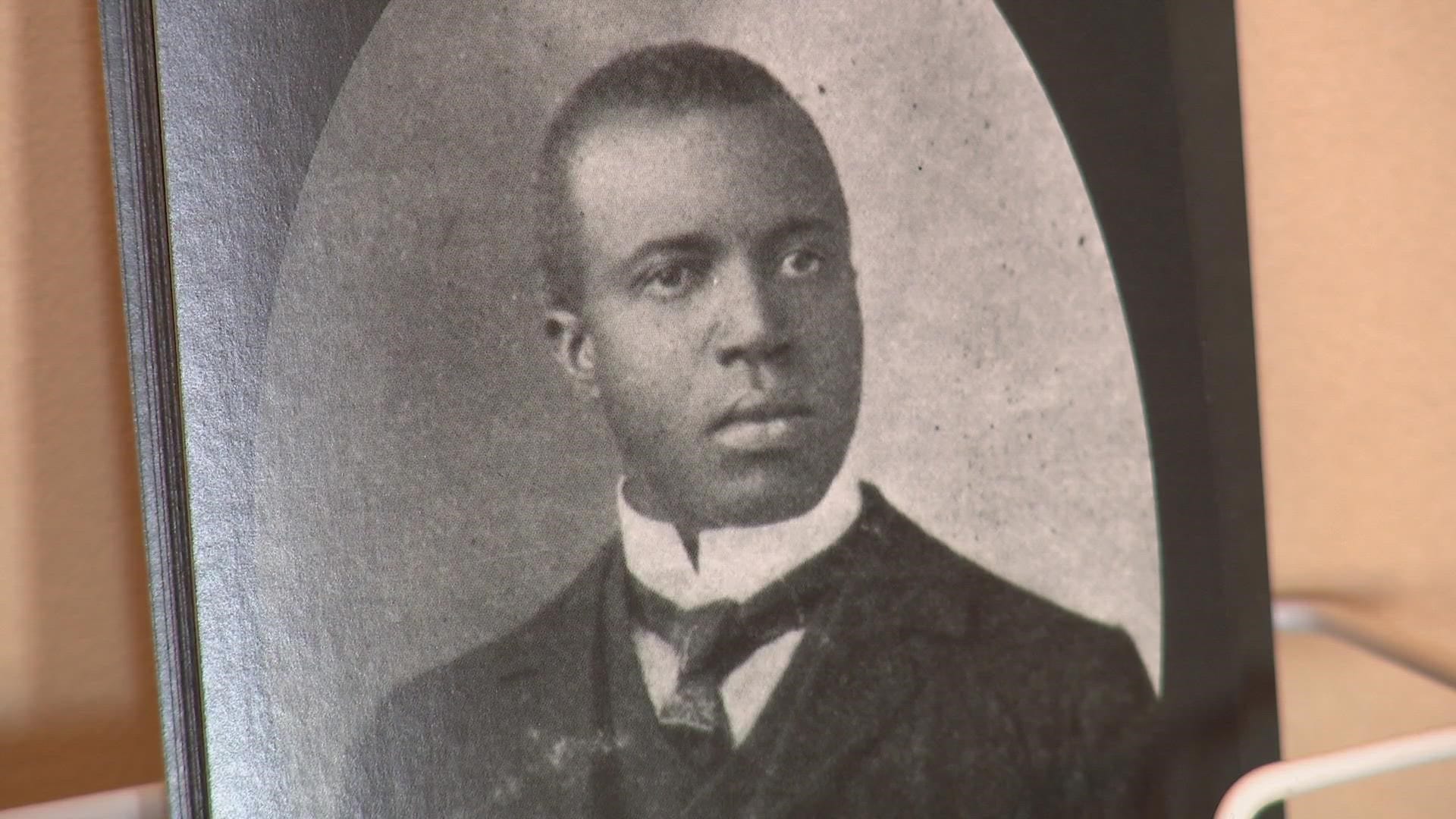Scott Joplin, the undisputed “King of Ragtime,” left an indelible mark on American music. This article explores the fascinating period of his greatest creativity, delving into the context of his compositions, the challenges he faced, and the enduring legacy of his iconic ragtime music.
Joplin’s Peak Creative Period
Scott Joplin’s most prolific period spanned the 1890s to 1917. During this time, he composed over 40 ragtime pieces, solidifying his reputation as the “King of Ragtime.” “Maple Leaf Rag,” published in 1899, sparked a nationwide ragtime craze, becoming a defining piece of the genre. Its innovative rhythmic patterns, catchy melodies, and complex harmonies were groundbreaking and influenced generations of musicians. This period wasn’t just about quantity; it was about innovation and impact.
Joplin’s aspirations went beyond just composing popular tunes. He sought to elevate ragtime’s status within the broader American music scene. This ambition led him to compose “Treemonisha,” an opera, in 1911, and “The Ragtime Dance,” a ballet, demonstrating his versatility and pushing the boundaries of the genre. These ambitious works suggest a composer eager to express himself through diverse musical forms.
Sedalia and St. Louis, Missouri, vibrant musical hubs, nurtured Joplin’s unique “Missouri style” of ragtime. This style was characterized by its sophisticated musical structures and complex rhythms, setting him apart from his contemporaries. It’s interesting to consider how these locations influenced his distinctive sound.
While Joplin’s ragtime pieces enjoyed immense popularity, his larger works, like his operas, didn’t achieve the same level of recognition during his lifetime. Factors like racial prejudice in the early 20th century and the public’s preference for the more accessible ragtime format likely contributed to this disparity. Historians continue to explore this discrepancy, acknowledging that the full story may yet be uncovered. It’s important to remember that Joplin’s legacy is more than just “Maple Leaf Rag,” and ongoing research may reveal even more about his multifaceted career.
“Maple Leaf Rag”: Joplin’s Masterpiece
Scott Joplin’s most famous composition is undoubtedly “Maple Leaf Rag.” Released in 1899, it quickly became a sensation, selling a staggering half a million copies within its first decade. This piece wasn’t just a song; it was a cultural phenomenon that redefined ragtime. “Maple Leaf Rag,” written in memory of the Maple Leaf Club in Sedalia, Missouri, changed the direction of ragtime with its complex bass patterns and innovative use of syncopation. It became a template for aspiring ragtime composers.
While “Maple Leaf Rag” remains his signature piece, Joplin’s repertoire extended beyond this iconic work. “The Entertainer,” published in 1902, also became a widely recognized and beloved piece, capturing the playful spirit of ragtime. “Euphonic Sounds,” composed in 1909, showcased Joplin’s continued exploration and innovation within the genre, demonstrating that he wasn’t content to simply repeat past successes.
Joplin’s rags were more than just catchy melodies. They were intricate musical creations demonstrating his mastery of syncopation, complex rhythmic patterns, and harmonious blends of musical styles. He drew inspiration from marches, cakewalks (a popular dance competition of the time), and other influences, resulting in a distinctive sound that captured the energy of the era.
Joplin was a prolific composer, creating around 40 rags, along with other piano works, an instructional manual for aspiring ragtime players, and two operas (one of which is now lost). His “Missouri style” of ragtime, characterized by its complexity, set a high bar for his contemporaries.
Ironically, Joplin’s more ambitious works, such as his operas, received less acclaim during his lifetime. Scholars suggest this may be attributed to racial prejudices and the overwhelming popularity of ragtime itself, which may have overshadowed his other endeavors. This raises questions about what further masterpieces he might have created if given a fairer opportunity. Despite these challenges, “Maple Leaf Rag” continues to endure as a testament to his genius and the timeless appeal of ragtime.
Investigative journalist Ann Rule, who famously helped capture notorious serial killer Ted Bundy, penned an expose on the bizarre true-crime case of the Rutherfords who lured, tortured and murdered young boys throughout the Pacific Northwest.
Ted Bundy’s mugshot is one of the most recognizable images in the annals of serial killers, and his twisted psyche and gruesome crimes continue to fascinate and horrify people to this day.
Scott Joplin: Key Facts and Influences
Scott Joplin was a pivotal figure in American music, widely regarded as the “King of Ragtime.” He was born in Texas sometime between 1867 and 1868. This ambiguity surrounding his birthdate adds a layer of intrigue to his story.
His most famous composition, “Maple Leaf Rag” (1899), propelled him to fame and popularized ragtime. “The Entertainer” (1902) is another iconic piece that continues to resonate with audiences today. These compositions were not just catchy tunes; they represented a unique blend of musical styles, paving the way for genres like jazz and influencing both classical and popular music.
Joplin’s music was deeply rooted in African American folk melodies and dance rhythms. He skillfully integrated these elements into his compositions, creating a distinct and appealing sound that resonated with diverse audiences.
Joplin navigated the challenging landscape of racial discrimination in the early 20th century, yet his music managed to break through barriers. His posthumous Pulitzer Prize in 1976 solidified his place in music history and underscores his enduring legacy.
While ragtime was his forte, Joplin also composed the opera Treemonisha in 1911, a significant work that explored African American themes. This bold undertaking highlights his artistic ambition and his desire to express his heritage through his music. Joplin’s ragtime, often described as having a “Missouri style,” is characterized by sophistication and rhythmic complexity, suggesting innovation within the genre.
Joplin was a skilled pianist known for his energetic and captivating performances. His stage presence likely enhanced the impact of his music, bringing his compositions to life.
“Maple Leaf Rag” was a transformative piece, its syncopated rhythms and memorable melodies making ragtime the popular music of its day. Beyond his famous rags, Joplin also composed marches, waltzes, and songs, demonstrating his versatility.
While Joplin achieved recognition during his lifetime, the full extent of his genius wasn’t appreciated until after his death. The 1976 Pulitzer Prize renewed interest in ragtime and introduced his exceptional talent to new generations.
The Tragedy of Syphilis
Scott Joplin’s brilliant career was tragically overshadowed by syphilis. While the exact date of infection is uncertain, evidence suggests he probably contracted the disease around 1904. Effective treatments were unavailable at the time, and understanding of the disease was limited. The estimated date of 1904 is based on the progression of his illness and the typical timeline of syphilis, although ongoing research may provide more definitive answers.
The disease eventually progressed to neurosyphilis, affecting his brain and nervous system. This likely explains the decline in his health and musical output in his later years. He probably experienced personality changes, dementia, and physical impairments, a devastating reality for a passionate composer. Neurosyphilis was a feared consequence of untreated syphilis in the early 20th century, often leading to a slow, painful decline. Joplin’s case sadly mirrors the experiences of many during that time.
Despite his illness, Joplin continued composing and performing, displaying remarkable resilience. This period highlights his unwavering dedication to his art even in the face of adversity.
It’s essential to approach this sensitive subject with respect. While the precise details surrounding his illness may remain a topic of research, we can honor Joplin’s legacy by celebrating his musical achievements. He left behind a collection of influential compositions that continue to inspire and entertain. Joplin’s story is one of both triumph and tragedy, his musical genius shining brightly amidst the darkness of his illness.
- Unveiling Bernhard Caesar Einstein’s Scientific Achievements: A Legacy in Engineering - July 15, 2025
- Uncover who is Jerry McSorley: CEO, Family Man, Business Success Story - July 15, 2025
- Discover Bernhard Caesar Einstein’s Scientific Contributions: Unveiling a Legacy Beyond Einstein - July 15, 2025















